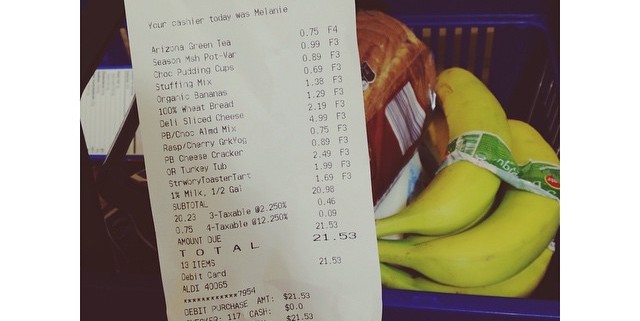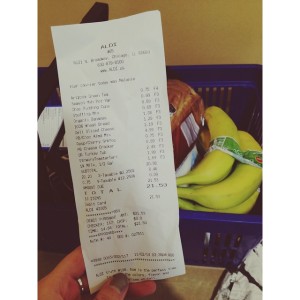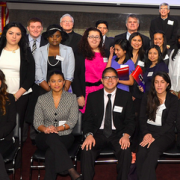$4 A Day: Hunger & Food Insecurity
BY MELISSA HAGGERTY | November 21, 2014
Every morning after I wake up and get dressed, I swipe into the dining hall and eat breakfast. Then I go to class and maybe have a snack afterward in my room. I swipe into the dining hall again for lunch and dinner. It is this constant access to food that makes me privileged.
According to the USDA, 49.1 million Americans experienced food insecurity in 2013. This means 14% of households often don’t know where their next meal is coming from, which is something I have never personally experienced. Thus, I decided to take the SNAP Challenge to gain a better understanding of what it means to be food insecure. In accordance with the average Supplemental Nutrition Assistance Program benefits, I was allowed a budget of $4 a day for food.
I went to my local Aldi and started adding the cheapest things I could find to my basket, always aware of the looming $28 budget for the week. I used the calculator app on my phone to keep track of the prices–a first for me. It’s worth noting that while I am a college student making minimum wage at a 12-hour-a-week job, I have still never had to worry about how much money I spend on food.
While I was adding things to my basket, I thought, “Wow, this is a lot of food.” The total at the register was a few dollars less than my budget, and I felt pretty good about the coming week. I bought things like bread, turkey, cheese, bananas, trail mix, Pop-Tarts, crackers, instant potatoes, ramen, milk, etc. Although I had just started the challenge, I was hungry all day on Monday. Nothing I ate seemed to fill me up (which is unusual for me because I don’t tend to eat a lot). I was so tired that I skipped a class–the first time I skipped all semester. I had no energy, and it was only day one! By day three, my diet consisted of mainly ramen, bananas, and trail mix. By day five: instant potatoes and Pop-Tarts.
On Thursday (day four), I developed a mild sore throat which eventually progressed into pharyngitis. It’s likely that my poor diet and fatigue weakened my immune system. I ended up going over my budget by a few dollars to buy Gatorade, tea, and pudding to soothe my throat. This was perhaps the most eye opening part of my experience, because I knew that if I were truly relying on SNAP benefits, I wouldn’t have been able to buy those things. I might not have been able to afford the antibiotics, cough drops, and DayQuil, either.
You can be employed and still not have enough money for food. In fact, according to the USDA, more than 40% of those receiving SNAP benefits are employed. It’s hard to overcome a systemic issue like this, but if you are lucky enough not to worry about where your next meal is coming from, I encourage you to think about how you were most likely born into that privilege, as those who are food insecure were most likely born into their situation. What I hope to achieve by sharing my experience is to reduce the stigma of hunger and food insecurity.
For more information on hunger and food insecurity in the United States, I recommend watching the documentary A Place at the Table (it’s on Netflix!), checking out this insightful article from PBS, or reading up on some facts from Feeding America.
Melissa Haggerty is a sophomore at Loyola University Chicago studying psychology. She is Vice President of the Loyola Coalition for the Homeless, an intern with the Chicago Coalition for the Homeless, and a member of the Hunger Week team. Melissa is passionate about advocacy and social change, and is specifically interested in homelessness and hunger, feminism, and sustainability.












Leave a Reply
Want to join the discussion?Feel free to contribute!